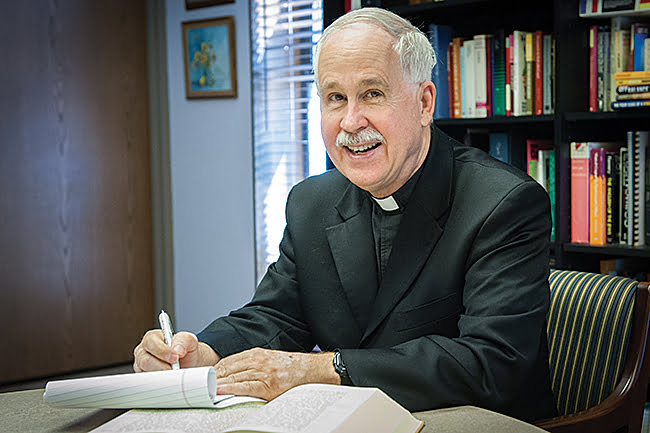
Father Mike Stubbs is the pastor of Holy Cross Parish in Overland Park and has a degree in Scripture from Harvard University.
by Father Mike Stubbs
The scene of the Last Judgment has often appeared in Christian art.
Michelangelo painted it on the wall of the Sistine Chapel, where it figures prominently over the altar.
Medieval cathedrals frequently showed Christ the King separating the saved from the damned in a sculpture over the main entrance.
These portrayals of the Last Judgment look very dramatic. They intended to inspire those gazing upon them to take their decisions in this life very seriously. They will bear eternal consequences.
These artistic renditions of the Last Judgment underline the results of our decisions. At the same time, the artists ordinarily did not focus upon the content of those decisions.
In contrast, Sunday’s Gospel reading, Mt 25: 31-46, for the solemnity of Christ the King, delves into the meat of those decisions.
In the Gospel reading, the Son of Man, Christ the King, identifies with various categories of needy individuals.
Events from Jesus’ life match with those categories. For example, at the very first moment of his life, Jesus appeared as an outsider, when he was born in Bethlehem, far from Mary and Joseph’s hometown of Nazareth.
When he fled to Egypt with Mary and Joseph, he was once again a foreigner, a stranger in a strange land. Those events enable the words of the Gospel to make sense, where Christ the King says that he was “a stranger and you welcomed me.”
Similarly, when Jesus is condemned as a criminal by Pontius Pilate, that enables him to identify with other criminals held in prison.
Consequently, Christ the King says that he was “in prison and you visited me.”
To prepare Jesus for crucifixion, the soldiers strip him of his garments. Once again, Christ the King is able to identify with those in need, because he was “naked and you clothed me.”
On the cross, Jesus calls out, “I thirst.” A bystander extends a sponge, soaked in vinegar. This anticipates the statement of Christ the King, who says, “I was thirsty and you gave me drink.”
The examples of care for the needy that Christ the King, the judge, calls attention to, correspond to events in the life of Jesus.
That is why, when Christ the King says, “As often as you did it for one of these least ones, you did it for me,” it makes sense.
He is able to identify with the needy, because of what he has experienced himself.

